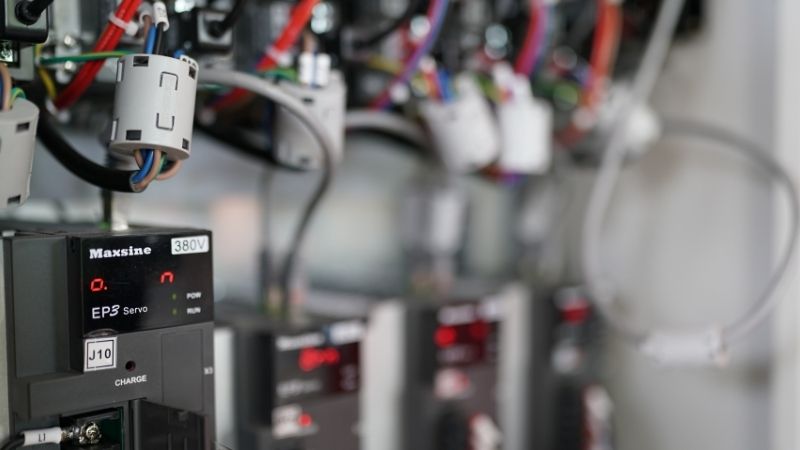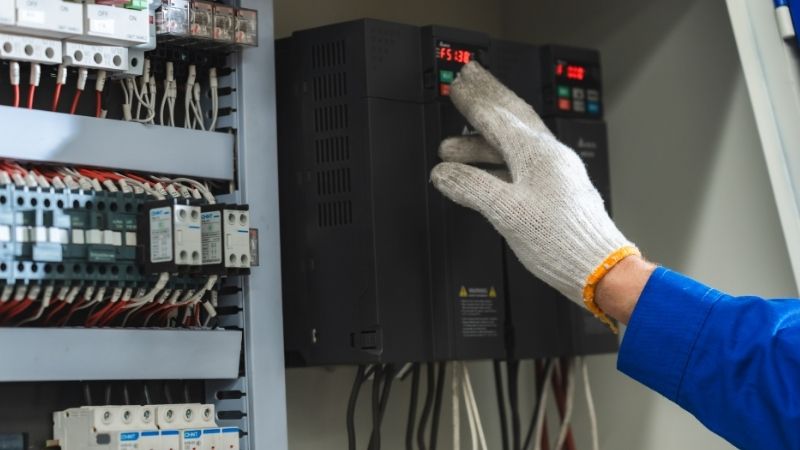VFD'yi Anlamak: Değişken Frekanslı Sürücü Nedir?
Değişken Frekans Sürücüsü (VFD), elektrikli bir motorun hızını ve torkunu kontrol eden elektronik bir cihazdır. motor motora verilen frekans ve voltajı değiştirerek. Bu yetenek, çeşitli uygulamalarda iyileştirilmiş enerji verimliliğine ve gelişmiş operasyonel esnekliğe yol açar.
İçindekiler
VFD Nedir?
The Değişken Frekans Sürücüsü (VFD) otomasyon alanında olmazsa olmaz bir cihazdır. Bir elektrik motorunu, kendisine uygulanan frekansı ve voltajı değiştirerek çalıştıran bir kontrolör görevi görür.
Temel olarak, bir VFD, elektrik beslemesinin frekansını değiştirerek bir AC elektrik motorunun hızını ayarlar. Bu dinamik ayarlama, motorun performansını ve ömrünü önemli ölçüde artırabilen düzgün hızlanma ve yavaşlamayı mümkün kılan hassas motor kontrolüne olanak tanır.
VFD'ler pompalar, konveyörler ve fanlar dahil olmak üzere çeşitli uygulamalarda yaygın olarak kullanılır. Motor hızını kontrol ederek, VFD'ler enerji tüketimini ve işletme maliyetlerini azaltmaya yardımcı olur. Ayrıca, motorunuz için mekanik ve elektriksel stresle ilgili sorunlara karşı daha iyi koruma sağlar, böylece optimum performans ve güvenilirlik sağlar.
VFD'ler Nasıl Çalışır?
VFD'ler gelen AC gücünü DC gücüne dönüştürerek ve ardından bir invertör kullanarak kontrollü bir AC çıkışına geri dönüştürerek çalışır. Bu dönüştürme işlemi, doğrultucular, kapasitörler ve IGBT'ler (Yalıtılmış Kapı Bipolar Transistörler) dahil olmak üzere birkaç önemli bileşeni içerir.
- Düzeltme: İlk adım, AC giriş voltajını DC'ye doğrultmayı içerir. Bu, AC gücünü titreşimli bir DC biçimine dönüştüren diyotlar veya tristörler kullanılarak gerçekleştirilir.
- DC Bus Filtreleme: Düzeltmeden sonra, kapasitörler, titreşen DC'yi yumuşatmak için kullanılır ve kararlı bir DC voltajı oluşturur. Bu DC veri yolu, gerekli gücü sağlar invertör sahne.
- Ters çevirme: İnverter daha sonra IGBT'leri hızla açıp kapatarak DC'yi tekrar AC'ye dönüştürür. İnverter, anahtarlama frekansını ve süresini değiştirerek motora verilen çıkış frekansını ve voltajını kontrol edebilir.
Bu karmaşık süreç, VFD'lerin motorun hızını uygulamanın gereksinimlerine göre hassas bir şekilde ayarlamasına olanak tanır, böylece önemli enerji tasarrufu ve gelişmiş verimlilik elde edilir.
Neden VFD Kullanmalısınız?
VFD Kullanmanın Faydaları Nelerdir?
VFD'ler, onları endüstriyel ortamlarda popüler bir tercih haline getiren sayısız avantaj sunar. Bazı önemli avantajlar şunlardır:
- Enerji Verimliliği: Motor hızını kontrol ederek, VFD'ler belirli uygulamalarda enerji tüketimini 50%'ye kadar azaltabilir. Bu, özellikle hız talebinin değiştiği süreçlerde faydalıdır.
- Geliştirilmiş Proses Kontrolü: VFD'ler motor hızının ve torkunun hassas bir şekilde kontrol edilmesini sağlayarak pompaların, konveyörlerin ve diğer makinelerin daha iyi çalışmasını sağlar. Bu, gelişmiş ürün kalitesi ve tutarlılığına yol açar.
- Azaltılmış Mekanik Stres: VFD'ler, düzgün hızlanma ve yavaşlama sağlayarak motorlar ve tahrikli yükler üzerindeki mekanik stresi en aza indirir. Bu, mekanik bileşenlerin ömrünü önemli ölçüde uzatır.
- Daha Düşük Kurulum Maliyetleri:VFD'ler genellikle dişli kutuları ve debriyajlar gibi ek mekanik bileşenlere olan ihtiyacı ortadan kaldırarak kurulum ve bakım maliyetlerini düşürebilir.
VFD'ler Hangi Uygulamalarda Kullanılır?
VFD'ler çok yönlüdür ve aşağıdakiler de dahil olmak üzere çeşitli endüstrilerde uygulanabilir:
- Su ve Atıksu Arıtma:VFD'ler pompaların hızını kontrol ederek yeterli akış hızlarını garanti altına alırken önemli miktarda enerji tasarrufu sağlar.
- HVAC Sistemleri: Isıtma, havalandırma ve iklimlendirme sistemlerinde VFD'ler fan ve kompresörlerin hızını düzenleyerek enerji verimliliğini ve konfor seviyelerini artırır.
- Üretme:VFD'ler, daha iyi hız kontrolü yoluyla tutarlı ürün kalitesini korumak için konveyör sistemlerinde ve makinelerde yaygın olarak kullanılmaktadır.
VFD'lerin Farklı Türleri Nelerdir?
Doğru VFD Tipi Nasıl Seçilir?
Piyasada çeşitli tipte VFD'ler mevcuttur ve her biri belirli uygulama ihtiyaçlarını karşılamak üzere tasarlanmıştır:
- Gerilim Kaynaklı İnverterler (VSI): Bunlar DC voltajını ayarlanabilir AC çıkışına dönüştüren en yaygın VFD türüdür. AC motorlarını kontrol etmek için yaygın olarak kullanılırlar.
- Akım Kaynaklı İnverterler (CSI): CSI'lar daha az yaygındır ve genellikle yüksek güç uygulamalarında kullanılır. DC akımını ayarlanabilir AC çıkışına dönüştürürler.
- Darbe Genişlik Modülasyonu (PWM) Sürücüleri: PWM sürücüler, değişken frekanslı bir çıkış oluşturmak için bir modülasyon tekniği kullanan bir VSI türüdür. Verimlilikleriyle bilinirler ve çeşitli endüstriyel uygulamalarda yaygın olarak kullanılırlar.
Bir VFD seçerken, optimum performansı garantilemek için motor tipi, gereken hız aralığı ve uygulama özellikleri gibi faktörleri göz önünde bulundurun.
Sıkça Sorulan Sorular
Değişken Frekans Sürücüsü, öncelikle elektrik motorunun hızını ve torkunu, kendisine verilen frekansı ve voltajı ayarlayarak kontrol eder.
VFD'ler hassas motor hızı kontrolüne olanak tanır, bu da motor performansını gerçek yük gereksinimleriyle eşleştirerek önemli enerji tasarruflarına yol açabilir.
VFD'ler öncelikle AC motorlar, özellikle endüksiyon motorları için tasarlanmıştır. Ancak bazı VFD'ler belirli DC motor tipleriyle de çalışabilir.
VFD'ler genellikle minimum bakım gerektirir, ancak düzenli olarak toz birikimini kontrol etmek, uygun soğutmayı sağlamak ve giriş ve çıkış bağlantılarını izlemek önemlidir.
Evet, birçok VFD tehlikeli ortamlarda güvenli bir şekilde çalışmak için koruyucu özelliklerle tasarlanmıştır. Ancak, bu tür koşullar için derecelendirilmiş bir VFD seçmek hayati önem taşır.
Projelerinize yepyeni, orijinal Omron, Mitsubishi, Schneider VFD'lerle güç katın - stokta, hemen hazır!
Çözüm
Özetle, Değişken Frekans Sürücüleri (VFD'ler), modern endüstriyel otomasyonda elektrik motoru sistemleri üzerinde benzersiz bir kontrol sağlayan önemli bileşenlerdir. İyileştirilmiş enerji verimliliği, daha iyi proses kontrolü ve azaltılmış mekanik stres dahil olmak üzere çok sayıda fayda sunarlar. VFD'lerin nasıl çalıştığını ve uygulamalarını anlamak, profesyonellerin otomasyon süreçlerini optimize etmede bilinçli kararlar almalarını sağlayabilir.
- VFD'ler elektrik motorlarının hızını ve torkunu kontrol eder.
- Enerji verimliliğini artırır ve işletme maliyetlerini azaltırlar.
- VSI ve PWM dahil olmak üzere çeşitli VFD tipleri mevcuttur.
- Düzenli bakım, optimum performans ve uzun ömür sağlar.
- VFD'ler çok yönlüdür ve çeşitli endüstrilerde uygulanabilir.
Projeleriniz için yeni, orijinal İnverter mi arıyorsunuz? Kwoco'da, en iyi markaların en son invertörlerini stoklarız: Omron, Mitsubishi, Ve Schneider. Güvenle alışveriş yapın—hızlı kargo, garantili kalite! Hemen Satın Al
Bize Ulaşın
Bu forma adınızı, e-posta adresinizi ve sorunuzun kısa bir açıklamasını girmeniz yeterlidir. 24 saat içinde sizinle iletişime geçeceğiz.
Bu Konuları da İlginizi Çekebilir
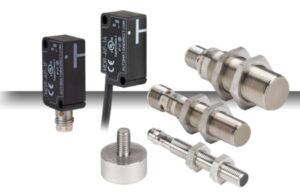
Yakınlık Sensörleri: Endüktif ve Kapasitif Açıklaması
Bu makale, özellikle endüktif, kapasitif ve yakınlık türlerine odaklanarak endüstriyel sensörler dünyasına derinlemesine dalıyor. Bu sensörlerin nasıl çalıştığını, uygulamalarını ve avantajlarını anlamak, üretim süreçlerinizi optimize etmek için çok önemlidir. Bu kapsamlı kılavuz, operasyonlarınızda daha fazla verimlilik ve güvenilirlik sağlayarak, özel ihtiyaçlarınız için doğru sensörü seçmeniz için gereken bilgiyle sizi donatacaktır. Makine imalatı, fabrika çözümleri veya endüstriyel otomasyonla ilgileniyor olun, eğrinin önünde kalmak için mutlaka okunması gereken bir kitaptır.
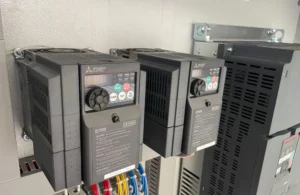
10 Yaygın Mitsubishi Servo Alarm Kodu ve Çözümleri: Sorun Giderme Kolaylaştırıldı!
10 Yaygın Mitsubishi Servo Alarm Kodu ve Çözümleri: Sorun Giderme Kolaylaştırıldı! Endüstriyel otomasyonda servo sürücüler kritik öneme sahiptir ve Mitsubishi
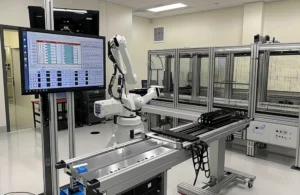
Endüstriyel Otomasyonda İnsan-Makine Arayüzlerini (HMI) Anlamak
Endüstriyel Otomasyonda İnsan-Makine Arayüzlerini (HMI'ler) Anlamak Hızla gelişen endüstriyel otomasyon dünyasında, İnsan-Makine Arayüzleri (HMI'ler) önemli bir rol oynamaktadır.

